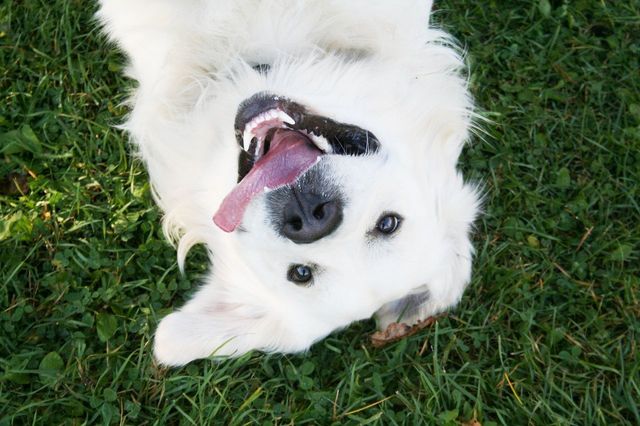
If you have a pet at home you should agree that once we choose to take care of an animal – dog, cat, parrot, ferret, horse and what not! – these creatures become a big part of our life and can’t but influence it, whether we want it or not.
We generally know the outstanding classical composers by their music legacy and it is what we love them for. But just like all ordinary people, music genii lived their non-musical lives full of human trivia that sometimes made a huge impact on their creative work. Today let us look at some interesting cases of relations between composers and dogs. Some were inspired by their own favorite pets, others had good fellowship with someone else’s dogs, and some were greatly distracted from work by the four-footed beasts.
Let us start with Frederic Chopin. No, he did not have a dog of his own. But his lover – George Sand – did. It was a small dog she called Marquis and he and composer hit it off pretty well. Chopin would often mention the dog with great warmth in his letters to Sand. Marquis also got into composer’s work: the Minute Waltz (the Waltz in D-flat major, Op. 64) composed by Chopin in 1847 was originally titled “The Little Dog Waltz”, and it is believed that Marquis’ chasing his own tale served as inspiration for writing this playful music piece.
Another example of a composer’s affection towards someone else’s dog is the case of Ludwig van Beethoven and Gigons. Gigons was the name of Therese Malfatti’s dog. Therese used to be Beethoven’s student as well as his romantic passion. The famous bagatelle “Für Elise” is said to have been composed for the young lady in 1810, the year when Beethoven opened his feelings and proposed to her. "Unfortunately, the girl refused to marry the 20-years-older composer, to his great dismay. The only way Beethoven still felt related to Therese was his friendship with Gigons: he would mention the dog in his letters to a friend taking joy in the dog’s company.
Speaking of true dog fans, Edward Elgar was obviously one of the most dedicated ones. Too bad his wife Alice was against them, so Elgar could not have one at home during the 30 years of their marriage and only enjoyed occasional communication with his friend’s dog. It was George Robertson’s pet Dan who was later portrayed in the Enigma Variations (No. XI). After his wife’s death, Elgar was accompanied by two dogs till the rest of his life – Marco and Mina (The English Cocker Spaniel and The Cairn Terrier). Even during his work trips he would address his beloved pets over the radio and they reacted excitingly hearing their master’s voice from the speakers. Once Elgar even talked to Marco and Mina on the phone firmly ordering them not to bite the cushions.
The dogs did not always act as creative inspiration to composers. In some cases they could become the biggest distraction! Thus, an English composer Ethel Smyth once took her St. Bernard dog Marco to a rehearsal of Brahms’ Piano Quintet. The great author of the quintet himself was present there. To Smyth’s huge confusion, in the middle of the performance Marco entered the room and walked closer overthrowing the music stand of a cellist. Luckily, Johannes Brahms turned out to be a dog lover himself and was only pleased at the sight of the dog.
A more complicated dog-distraction took place in the life of Richard Wagner who, despite being a dog lover (he used to have a King Charles Spaniel, a Labrador and a Newfoundland), tangibly suffered from one in 1861. At that time Wagner was struggling to complete his opera “The Mastersingers of Nuremberg” and meet the deadline by 1862. One of those days he saw a bulldog tied in front of the house he lived in and decided to free him from the chain. He did so, but the dog managed to bite his hand which caused a serious thumb infection. The 6-months inability to write, of course, served as justification for not meeting the deadline. However, the ungrateful dog’s bite resulted in an overall 5-year delay period needed to accomplish the work.
Some dog-and-composer relations were way stranger, though. Louis Hardin, for instance, took a pen name Moondog after his dog Lindy who, according to Hardin, howled at the moon like a wolf. The “Moondog” composer would dress as a Viking and walk along the 54th Street of New York.
A German composer Hans Werner Henze, being a huge fan of all “English”, would speak to his dog James in English only. And the French song maestro Reynaldo Hahn named his dog after a philosopher from Voltaire’s novel – Zadig – and would write letters to him, saying how much he would love to become a dog himself.
Perhaps one of the biggest dog fans among contemporary avant-garde composers is George Crumb. He is not only fond of these animals in everyday life but has dedicated a tangible part of his repertoire to them. That is first of all the 1998 suite “A Dog’s World” dedicated to all the Crumb family dogs ever owned. One of them, a white fluffy dog Yoda, appears on the “Bad Dog! A Portrait of Crumb” DVD cover.
And the last one for now. There’s an experimental composer Laurie Anderson who, together with her husband Lou Reed, organized a concert in Sydney (2010) for a very specific audience – dogs only. The concert was performed near Sydney Opera House at a very high pitch (too high for a human). Anderson said that while preparing the performance she took ‘expert’ advice from her dog Lollabelle.
Humans and animals have been inseparable for years, one way or another. And history remembers so many more examples of their curious interaction. What similar cases can you think of? Maybe you have a curious story of your own? Share in comments!